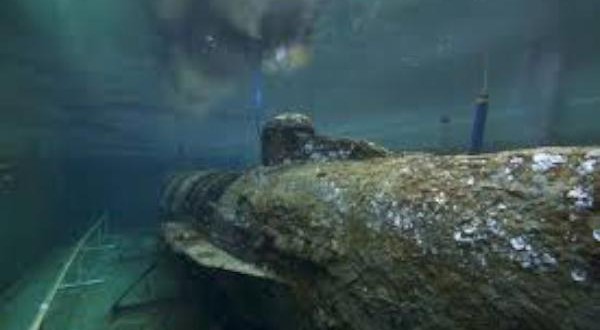The H.L Hunley was the first submarine built during the American Civil War, and after the vessel became the first submersible to sink another ship in wartime, it sunk off the coast of South Carolina. Now, researchers are able to study the construction and design of this historic marine vessel, built by a desperate Confederate military as their forces suffered a series of defeats on the ground.
“It’s like unwrapping a Christmas gift after 15 years. We have been wanting to do this for many years now,” said Paul Mardikian, senior conservator on the Hunley project.
The Hunley sank the Union blockade ship USS Housatonic off Charleston in February 1864 as the South tried to break the Union blockade strangling the Confederacy. But the sub and its eight-man crew never made it back to shore.
The Hunley was discovered off the South Carolina coast in 1995, raised in 2000 and brought to a conservation lab in North Charleston.
It was covered with a hardened gunk of encrusted sand, sediment and rust that scientists call concretion.
Last May, it was finally ready to be bathed in a solution of sodium hydroxide to loosen the encrustation. Then in August, scientists using small air-powered chisels and dental tools began the laborious job of removing the coating.
Now about 70 percent of the outside hull has been revealed.
Mardikian said the exposed hull indeed has revealed some things that may help solve the mystery of the sinking.
“I would have to lie to you if I said we had not, but it’s too early to talk about it yet,” he said. “We have a submarine that is encrypted. It’s like an Enigma machine.”
He said the clues will be studied closely as scientists try to piece together what happened to the 40-foot submarine that night in 1864.
The Hunley had a 16-foot spar tipped with a charge of black powder that was exploded, sinking the Housatonic. After close examination of the spar two years ago, scientists speculated the crew was knocked unconscious by the shock wave of the explosion.
When the Hunley was first raised, scientists speculated the crew may have run out of air before they could crank back to the coast.
After the Hunley was raised, the sand and the silt and the remains of the crew in the interior were removed.
In April 2004, thousands of men in Confederate gray and Union blue walked in a procession with the crew’s coffins four miles from Charleston’s waterfront Battery to Magnolia Cemetery in what has been called the last Confederate funeral.
Agencies/Canadajournal
 Canada Journal – News of the World Articles and videos to bring you the biggest Canadian news stories from across the country every day
Canada Journal – News of the World Articles and videos to bring you the biggest Canadian news stories from across the country every day



